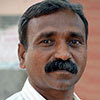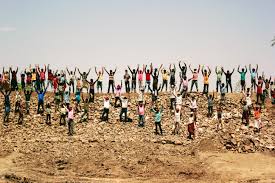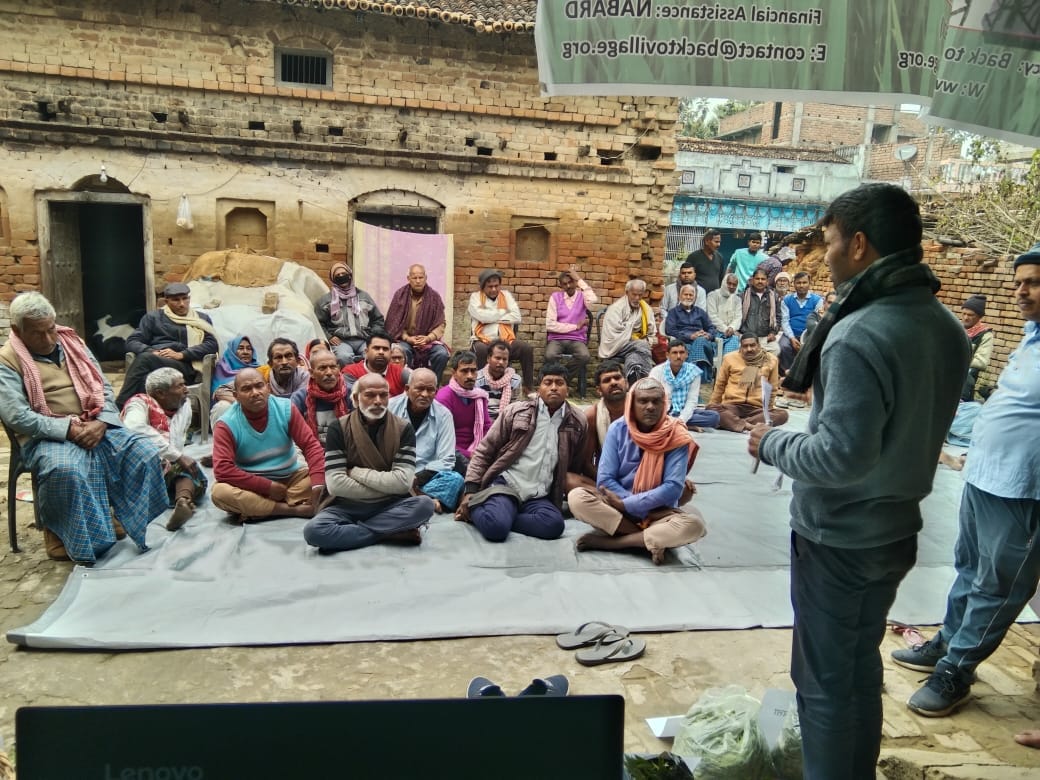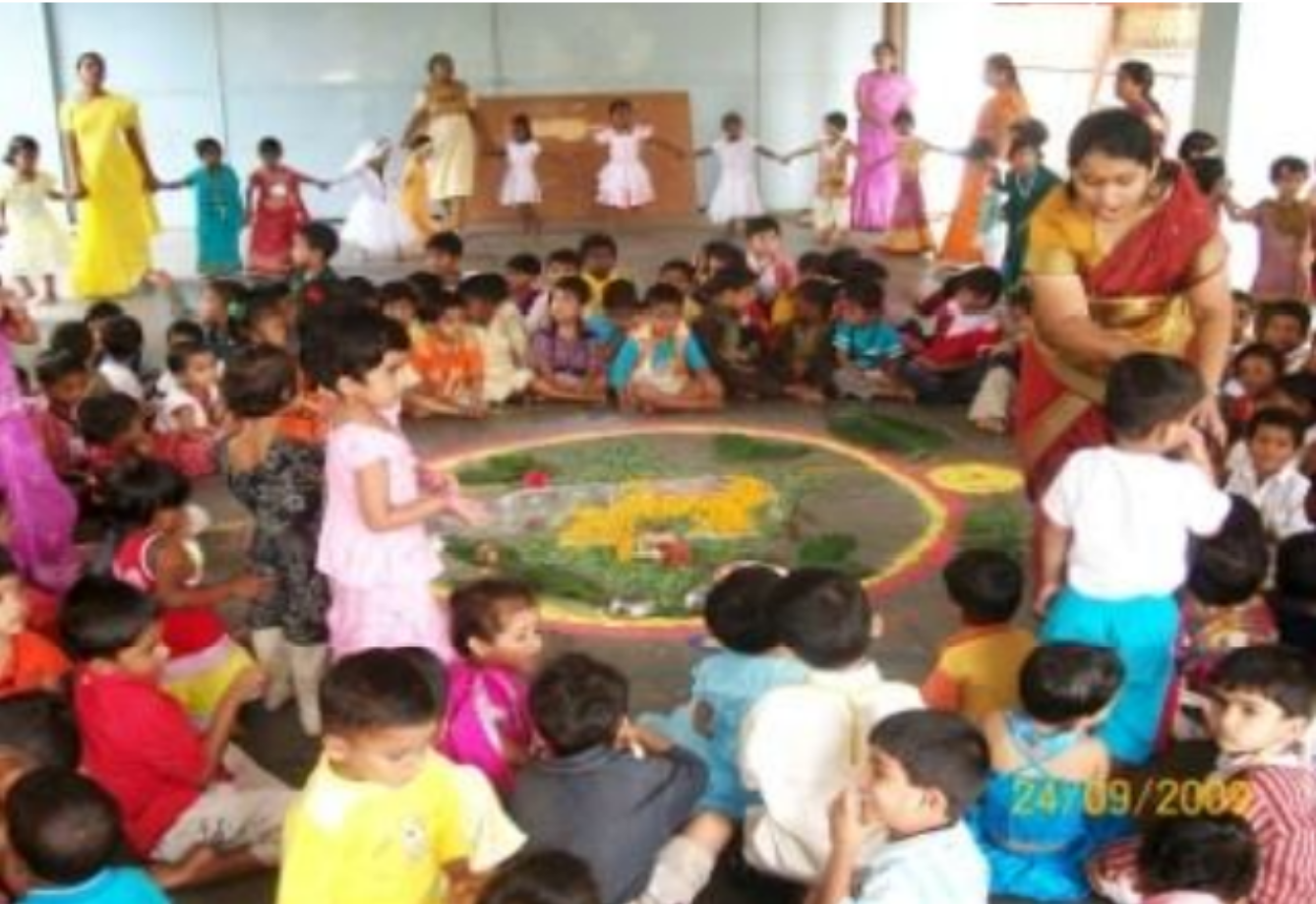Climate change and deforestation are very critical issues in our world currently. Billions of trees get cut down each year. This is an even graver issue in remote or rural villages whose only resource for their economy and agriculture are their forests. Such was the case in Baripada, a small village in Maharashtra, India, close to the border of Gujarat. There are only two rickshaws that have the ability to take you there, no buses. There is only one school that children can attend up till fourth grade. The people of Baripada did not farm and there were very few new jobs. There were no sustainable energy forms, therefore making it hard for villagers to have running water and electricity. This started changing when Chetram Pawar, of the Vanavasi Kalyan Ashram, an NGO dedicated to the betterment of tribals in India took up the work of developing this village. Through his work, the entire community came together and made changes that were very vital to the development of the village. We had an opportunity to talk to Chetram Pawar about his life, his inspiration and understand the work he was doing.
Early life
Chetram Pawar grew up in Baripada with his parents. As a child, his parents were very keen on Pawar receiving a good education, since they didn’t get the opportunity to get one for themselves. When he left the village to get higher education, he for the first time saw how villages were seen by the urban people. Every time he would come to visit home, he would see the forest continuing to be depleted more and more. He saw that many families, especially the bread-winners, very often were addicted to alcoholism. It was very disheartening to see the place he grew up suffer from deforestation and loss of a sense of purpose. Realizing the village wasn’t self-sustaining and most people would have to leave the village to get a good job, he decided he would need to make drastic changes to the village if they wanted to continue to have a sustainable community there. This is where his work took off in 1991.
One experience that left a significant impact on Pawar was the visits of Dr. Anand Pathak of the Vanavasi Kalyan Ashram. Vanavasi Kalyan Ashram is an Indian social welfare organization that focuses on betterment of tribals in the remote areas in India. When Dr. Pathak stayed there, he would make the food himself and serve it to others and wash the dishes himself as well. This was very inspiring for Pawar because even though Dr. Pathak was a well known and respected doctor, he was humble enough to do these small chores himself and for others too. He got a glimpse of selfless service in Dr. Pathak. He saw this as a very important quality for a change maker because the work that a social worker does is for the benefit of all and not for name or fame.
Chetram Pawar graduated with a bachelor’s degree in commerce. So, how does one with a commerce degree start an agricultural movement? we wondered. Pawar got his first glimpse of agriculture through the Jan Sewa Foundation (an organization that closely worked with Varanasi Kalyan Ashram), where he worked hands-on in the fields and farming for seven years. The region where he was doing the work at this time often held several melas, or fairs, for farmers to meet from different villages. He developed more skills and connections by talking to people at these melas.
The five Js for village development and sustainability
Pawar had 5 main aspects in his vision to improve the village. These aspects are the five J’s in Hindi: “Jal (water), Jamin, (land), jaanwar (animals), jan (people), and the jungle (forest)”.
He realized that words alone would not be enough to convince the residents that farming was still a valid and valuable career in the industrializing world. People of the village largely assumed that it was the forest department’s responsibility to take care of their dwindling forest. Also he realized that working on the 5 J’s was no man’s job. This type of work takes a tremendous amount of teamwork, so getting the entire village to start being more involved and caring about the project was vital. It took a lot of consistent time and effort and most importantly persistence.
Initially, no one was on board with the plan and it took a good two to three years to convince everyone of the cause. Pawar would go to individual families’ houses and explain his vision several times. He started by engaging them in saving their own forest because these changes would affect them the most. A flourishing forest would provide the residents with renewed job opportunities and resources. One aspect that he heavily emphasized was that all the workers and helpers should be paid well otherwise they might not have enough motivation or time to continue to make these changes. He consistently held regular meetings and actively involved the residents in all of the decisions that needed to be made. As the people gained a sense of duty towards their forest, they themselves instituted rules and fines for cutting down trees, vehicles in the forest, and other harmful activities. As the people realized they could save the forest, they gained new hopes of being able to farm in their own village. Pawar decided to work to make their hopes come true. He utilized 10x10m plots of the non-arable land that once used to flourish with crops. The plots were grazed/farmed with traditional methods, modern methods, and combinations to test for crop yields. An optimal combination was then acquired to retain traditional methods that were sustainable for the environment while utilizing modern techniques for high yields. A variety of crops were also planted to test for the best cash crop that could be grown in the climate of Baripada.
Engaging the Community
In 1991, he was able to fully start the work with the residents of the village. Chetram also realized the importance of getting the youth of the village involved in these changes. In his interview he said “the youth are the only way work can be sustained for many more generations to come.” Most of the children already had a strong desire to sustain the work, since they had been witnessing these changes throughout the years since 1991. They wanted their future generations to grow up with plentiful farms and not fall short of resources. Since 1991, many young volunteers have come through the Varanasi Kalyan Ashram. From there, they made small samitis (Hindi word for committees), each focusing on different aspects of the community they felt needed to be improved. One concentrated on health, one focused on the economic development of the village, one on the environment, and another focused on energy conservation. This allowed for a lot more youth to be directly involved because they felt like each of their individual voices were heard. The youth also took up solar and other renewable methods which are fairly modern forms of sustainable energy.
Pawar wanted to change their mindsets from the core, especially the belief that people can only make things work if the government supports them. He wanted to show them that change starts with the people first. More than the government, it was the job of the locals to find solutions to their own problems. Just like the disconnect of Baripada from cities and the government, the transformation of Baripada was also unrecognized and unheard of outside of the village for ten to fifteen years. But there are no secrets that time does not reveal. Slowly people from all walks of life came to Baripada to study the transformation of the village. PhD students from Germany, Canada, and Australia landed in Baripada and stayed in the tiny huts to learn about the village’s big transformation. Once the government heard about the international attention that the village was receiving, it constructed a small campus near the village to house students that frequently come from world-renowned universities such as IIT and TATA institute to study the village.
Changing the mindset
Along the way, Chaitram Pawar faced numerous challenges from gathering supporters to staying motivated despite the pushbacks. But with his optimistic attitude, he was able to work through all of them. People are always resistant to change, and one of Pawar’s largest battles was with people’s beliefs. The pessimistic attitude of people that only the government can make changes, the lost hope for regaining the forest, and the suspicion that people who propose changes are doing it for the fame to run for politics were only the start of his problems when trying to work with the locals. To slowly dismantle these beliefs and attitudes, He was determined to keep everything transparent, from the work he was doing to the money and awards he received. By bringing everyone from the village together to partake in each decision and work, he was able to establish trust in the community. Despite all the push backs, his focus on the vision kept him going. No matter what stood in his way, his drive to ensure the self-sustenance of Baripada and ensure good livelihoods for all the residents allowed him to continue.
An inspiring journey of a social change-maker
Overall we found the life and the work of Chetram Pawar very inspiring. While it was evident that he had brought about such important changes in the tribal village he kept telling us that the work was really done by others and not him. When asked about the qualities vital to changemakers, he told us that individuals need to be down to earth and simple to work with all types of people. It was important for all individuals to feel as though they are part of the work only then will they be prepared to work with the team and also make sacrifices for the betterment of the community. To be impactful, one must know how to unite and inspire people with the art of storytelling, he told us. And most importantly, the ability to go with the flow and adapt to changes while staying resilient is vital, we were told. Pawar also underscored the significance of having a mentor. His mentor, Dr. Anand Pathak Ji, was able to guide and support him through difficulties along his journey.
Although the transformative work was initially aimed at reviving Baripada, Pawar’s efforts have now expanded to include multiple towns and states. Baripada is part of 150 villages that lie contiguous with one another. Once Chaitram was able to transform his own village, he and his colleagues expanded their work to include their neighboring villages as well. Currently, they are actively working in fourteen states, including Bihar and Jharkhand.
(This article is based on the research and interview conducted by the two Indian-American high-schoolers as part of the Dharma Internship Program 2020. The authors acknowledge the valuable suggestions and help from their mentors and program coordinator)

Rhea Nayak
Rhea is a freshman at the University of Houston, Texas. She is a Public Health major and a yoga teacher and likes making collage art.







